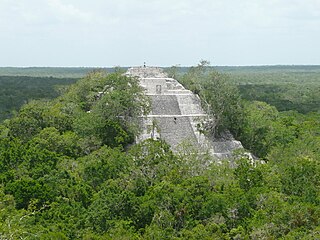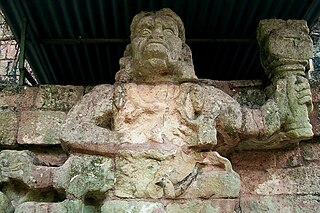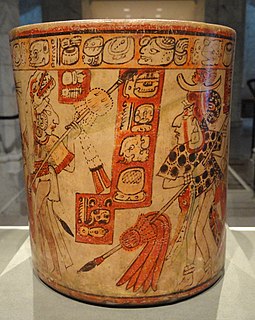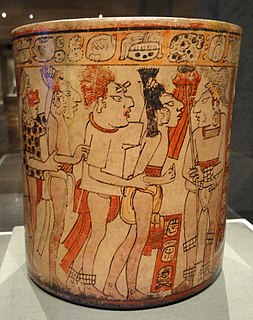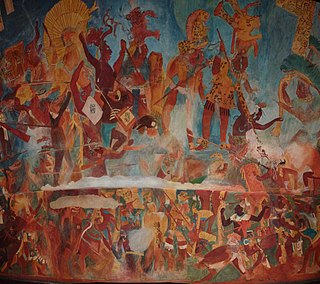| B'alaj Chan K'awiil | |
|---|---|
| Born | October 15, 625 |
| Other names | Ruler 1, Flint Sky God K and Malah Chan K'awil |
| Title | King of Dos Pilas |
| Successor | Itzamnaaj B'alam |
| Spouse(s) | Lady of Itzan Lady Bulu' |
| Children | Itzamnaaj B'alam Itzamnaaj K'awiil Wak Chanil Ajaw |
| Parent(s) | Tikal king |
| Relatives | K'ak' Tiliw Chan Chaak (likely grandson) |
 |
| Maya civilization |
|---|
| History |
| Preclassic Maya |
| Classic Maya collapse |
| Spanish conquest of the Maya |
B'alaj Chan K'awiil[ pronunciation? ] (October 15, 625 – ??) was a Maya ruler of Dos Pilas. He is also known as Ruler 1, Flint Sky God K and Malah Chan K'awil.

The Maya peoples are a large group of Indigenous peoples of Mesoamerica. They inhabit southern Mexico, Guatemala, Belize, El Salvador and Honduras. The overarching term "Maya" is a collective designation to include the peoples of the region that share some degree of cultural and linguistic heritage; however, the term embraces many distinct populations, societies, and ethnic groups that each have their own particular traditions, cultures, and historical identity.
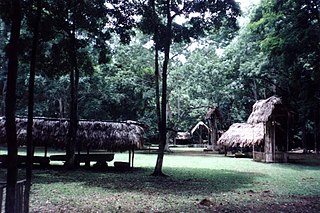
Dos Pilas is a Pre-Columbian site of the Maya civilization located in what is now the department of Petén, Guatemala. It dates to the Late Classic Period, being founded by an offshoot of the dynasty of the great city of Tikal in AD 629 in order to control trade routes in the Petexbatún region, particularly the Pasión River. In AD 648 Dos Pilas broke away from Tikal and became a vassal state of Calakmul, although the first two kings of Dos Pilas continued to use the same emblem glyph that Tikal did. It was a predator state from the beginning, conquering Itzan, Arroyo de Piedra and Tamarindito. Dos Pilas and a nearby city, Aguateca, eventually became the twin capitals of a single ruling dynasty. The kingdom as a whole has been named as the Petexbatun Kingdom, after Lake Petexbatún, a body of water draining into the Pasión River.


